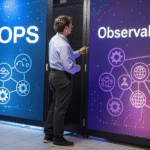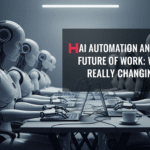AI In Agriculture Solves Farming’s Hardest Problems

Farming is not easy. You work hard daily, but sometimes the weather, pests, or crop diseases make things go wrong. It can feel like you’re doing everything right but still losing money. I understand—it’s frustrating.
That’s why I want to tell you something important: AI In Agriculture solves farming’s hardest problems. It’s not magic, and it’s not only for big farms. Even small farmers can use it, and it helps.

Think of AI as a smart helper. It watches your crops, checks the weather, and even tells you the best time to water or use fertilizer. You don’t have to guess anymore. AI tools send you updates on your phone so you can make better choices every day.
You don’t need to know everything about technology. Just using a simple app can help. Some apps even take a photo of your plants and tell you if they are healthy or sick. Others warn you if pests are coming so you can stop them before they cause damage.
With AI, you can save time, avoid waste, and grow better crops. It’s like having a friend who knows everything about farming—always ready to help.
So, if you’ve been struggling, don’t worry. You’re not alone. And now, you have a smart way to make things better. Try one small step. Start with one tool. You’ll be surprised how much it can help.
And the best part?
You don’t need big machines. Even a smartphone can get you started.
This is the future of farming. It’s smart. It’s simple. And it’s here for you.
Now, I will share with you the real story of my friend Hasan. He is a hardworking farmer from a small village. If you listen to his story, you will also benefit from it.
The Problem: Farming Isn’t Easy Anymore
He’s been farming for over 20 years. He knows his land well. He remembers when seasons used to come on time—when the rain would fall just when the crops needed it. Back then, farming felt simple. You worked hard, and the land gave back.

But now, things are different.
Last year, Hasan planted early because the weather looked good. But suddenly, a heatwave hit. His young plants couldn’t survive. The rain came too late. He lost half his crop before the season even started.
Later, when his crops finally began to grow, pests showed up—fast. By the time he saw the damage, it had already spread. He tried everything he could. Sprays, natural remedies, even help from a neighbor. Nothing worked in time. Another big loss.

And that’s not all.
The price of fertilizer had doubled. Water was harder to find. Fuel for his pump was more expensive. Even after all his effort, when he went to sell, the market price was so low, he barely made enough to cover his costs.
Hasan went home with less money—and more worry.
He said something that stuck with me:
“I don’t mind working hard. I’ve done it my whole life. But now it feels like no matter how hard I try, it’s not enough.”
And he’s right.
Farming today isn’t just about planting seeds. It’s about dealing with rising costs, strange weather, new pests, and too much risk. One small mistake can cost everything.
Hasan’s story isn’t special—it’s real. And it’s happening to farmers everywhere. Maybe even to you.
But there’s good news.
Hasan didn’t give up. He started using small tools powered by smart technology. An app told him the best time to plant. A weather alert saved him from another heatwave. Slowly, things started changing.

And if he can do it, you can too.
The Agitation: Guesswork Is Holding You Back
Hasan’s problems didn’t come from laziness. He worked harder than ever. But the problem was guesswork.
He didn’t know when the rain would come, so he guessed.
He wasn’t sure if his crops needed more water, so he gave more—just in case.
He saw a few yellow leaves and wasn’t sure if it was a pest or just dry soil. He waited. Then it got worse.
That’s what farming feels like these days. A lot of “I think,” “maybe,” and “let’s hope.”
But guessing doesn’t always work. It wastes water, time, and money. And worst of all, it causes stress.
Hasan once said,
“I don’t sleep well during harvest time. I keep thinking, did I water enough? Did I plant too early? Did I miss something?”
He wasn’t farming with confidence. He was farming with fear. And he’s not the only one.
When you have to guess everything, you can’t plan properly. You overuse some things. You underuse others. You wait too long to fix problems. And the price is always high.
It feels like you’re walking in the dark, hoping not to fall.
The Solution: Let AI In Agriculture Guide You
Then, one day, a local farming workshop introduced Hasan to a simple phone app that used AI in intelligence. He didn’t know much about technology, but he gave it a try.

That little app changed everything.
It started with weather alerts. One morning, it warned Hasan of heavy rain coming that afternoon. He paused watering his fields that day. It saved him time and water.
Next, the app showed him a health report of his crops, using just photos he took with his phone. It spotted early signs of pest damage. Hasan acted fast—before it spread. For the first time in years, he saved almost his entire crop.
He also got reminders of the best time to plant based on soil and weather data. It wasn’t magic. It was AI in intelligence—smart tools using data to help make better choices.
And the best part?
Hasan felt confident again. No more guessing. No more sleepless nights. He had support in his pocket—anytime he needed it.
He still works hard. But now, his hard work pays off more.
He told me with a smile,
“It’s like I’m farming with a friend who sees things before I do and tells me what to do next.”
And he’s right. That’s what AI does—it watches, learns, and guides. It won’t replace your skills. It supports them.
If Hasan can use it, so can you. You don’t need big machines or a big farm. Even small tools can bring big results.
Start with one thing—maybe a weather app, a crop scanner, or a soil check tool. Try it, test it, and grow from there.
Because now, you don’t have to farm alone. You can farm smarter—with the help of AI.
Benefits of AI In Agriculture: Future Smart, Predictive Farming
Farming has always been important. It feeds families, supports communities, and grows economies. But today, farming is facing big challenges—like climate change, rising costs, and a growing need for more food. That’s where technology comes in, especially AI In Agriculture.
AI, or artificial in agriculture, means smart machines that can learn, think, and help make better decisions. When used in farming, it can help grow more food, use fewer resources, and reduce waste. And the best part? It’s not just for big farms anymore. Anyone can start using smart tools to improve their work.
1. Detects Problems Early
One of the biggest benefits of AI in agriculture is catching problems before they spread. AI can spot plant diseases, pest attacks, or poor soil conditions early. This helps prevent big losses. Instead of reacting too late, you can fix problems quickly and protect your crops.

2. Helps You Grow More Using Less
Smart farming means using only what your crops need—no more, no less. AI-powered tools tell you where to use water or fertilizer. This reduces waste and saves money. And because your crops get just what they need, they grow stronger and faster. That means better harvests, more food, and higher income.
3. Makes Better Farming Decisions
AI in agriculture helps farmers make decisions based on data, not guesses. With smart sensors and tools, you can know the exact condition of your soil, weather, water levels, and crop health. This means you make better choices about when to plant, how much to water, and when to harvest. You stop guessing and start growing smart.

4. Makes Planning Easy with Predictions
AI doesn’t just look at what’s happening now—it also helps you plan for the future. Using past data and weather forecasts, it can tell you the best times to plant, irrigate, or harvest. It even predicts how much crop you might grow. This helps you plan better and avoid surprises.

5. Saves Time and Labor
Smart machines and tools can take care of time-consuming tasks like watering, checking crop health, and watching weather updates. This gives you more time to focus on other things. You don’t need a big team or long hours. With smart support, you work less and grow more.
6. Gives You 24/7 Monitoring
With AI tools, your farm is always being watched. Day or night, you can check your crops, soil, and animals from your phone or computer. If something goes wrong, you get an alert right away. This keeps your farm safe, even when you’re not there.

7. Supports Environment-Friendly Farming
Smart farming uses fewer chemicals, less water and protects the soil. This means better care for the earth. AI helps you grow food in a way that’s good for both people and the planet. And customers today love buying food from farms that care for nature.
8. Keeps the Food Supply Chain Strong
AI helps not just on the farm but also after the harvest. It makes it easier to store, pack, and send food to the market. It tracks how much is ready and where it should go. This reduces food waste and makes sure people get fresh products on time.
The Future is Smart—and It’s Now
Smart farming isn’t something that will happen in the distant future. It’s already here. Every day, more farmers around the world are using technology to grow food in better, faster, and smarter ways. And the best part? You don’t need to be a tech expert to be part of it.

Right now, AI in Agriculture is helping farmers make quick and smart decisions. With tools like sensors, drones, and farm apps, it’s easier to know exactly what crops need. For example, you can get an alert on your phone if your soil is too dry or if a part of your field needs more care. That means you don’t have to guess anymore—you can act right away and avoid problems before they get worse.
You don’t need to walk the whole field to check if your plants are healthy. AI-powered tools can scan the crops and give you updates. They can even tell you if a disease is starting to spread. This helps save time and protect your harvest. You work smarter, not harder.
What’s also great is that these smart tools are becoming more affordable. Many small farmers are already using simple apps that tell them when to plant, how much water to use, or what kind of fertilizer is best. Some tools even suggest the right time to harvest so the crops stay fresh and sell for a better price.
AI also helps with planning. It can study weather reports and give you advice on how to prepare. For example, if rain is coming, you’ll know whether to water your crops or not. You can avoid wasting water, and you can keep your farm running even in bad weather.
And you’re not alone in this. Many farming groups and governments are supporting farmers like you by offering training, free tools, and advice on how to start using AI in farming. They know this technology can help make life easier and farming more successful.
So, if you’re wondering whether this is the right time to start using smart farming tools, the answer is yes. The future isn’t just coming. It’s already here. And it’s helping people just like you to grow more, save money, and farm with less stress.
You don’t have to wait. You don’t have to do it all at once. Just take the first step. Try one smart tool. See how it works. Let technology support you so your farm becomes not just better but also smarter.
Revolutionizing Farming with AI
Farming is changing fast—and it’s changing for you. Today, you don’t have to rely on guesswork or wait until problems happen in your fields. AI (Artificial Intelligence) is here to help you farm smarter, not harder.

Imagine this: you’re walking through your fields, unsure if your crops are getting the right amount of water or if pests are starting to spread. Now, imagine having a smart system that tells you exactly what’s happening—before you even notice a problem. That’s what AI can do for you.
AI uses simple tools like sensors, cameras, and weather data to help you understand your land better. It can show you when to water, when to harvest, and even when to plant. It gives you updates in real time so you can act fast and avoid crop damage. No more guessing—just clear, helpful advice from a system that learns and improves over time.
If you’ve ever felt frustrated by unpredictable weather, crop diseases, or rising costs, AI can be your solution. It takes the stress out of decision-making and helps you feel more in control of your farm.
You don’t need to be a tech expert. You just need the right tools—and a willingness to try something new. With AI, farming becomes easier, more efficient, and more rewarding. It’s not just technology—it’s a helping hand made for you.
How AI Benefits Farmers
AI (Artificial Intelligence) can help you in many simple but powerful ways. You work hard every day on your farm, and AI is like an extra hand that never gets tired. It watches over your crops, gives you helpful advice, and helps you make better choices.

Here’s how AI can make a difference for you:
Gives You Useful Information
AI looks at data from the weather, your soil, and your crops. It turns all that information into clear, easy tips. For example, it can tell you when the best time to plant seeds, water your crops, or add fertilizer. This means you don’t waste time or resources—and your crops grow better.
Helps You Stop Problems Early
Pests, diseases, or bad weather can destroy crops fast. AI can warn you early. It can spot signs of trouble—like bugs, plant sickness, or dry soil—before they spread. This helps you fix the problem quickly and save your crops.
Makes Farming Easier
AI can control smart machines that plant seeds, spray fertilizer, or even harvest crops. This saves you hours of hard work. You can do more with less effort, especially if you don’t have many workers.
Saves Water and Other Resources
Water is precious, and so are fertilizer and pesticides. AI helps you use just the right amount—no more, no less. This saves money and protects your land from damage caused by overuse.
Helps You Make More Money
With AI, your crops are healthier, your farm runs better, and your costs go down. You grow more food using fewer resources, which means you can sell more and keep more of the money you earn.
Protects Nature
Using AI means farming in a smarter and greener way. You can reduce waste, avoid harmful chemicals, and clean the soil and water. That’s good for your farm today—and for your children’s future, too.
So What?
Because it helps you.
-
- You work hard every day. AI helps you work smarter, not harder.
-
- You want to grow more and spend less—AI makes that possible.
-
- You face problems like bad weather, pests, and rising costs—AI helps you solve them early.
-
- You care about your land—AI helps you protect it for the future.
-
- You want a better life for your family—AI helps you earn more and stress less.

So what?
Because you deserve better tools.
Because farming is hard—and AI makes it easier.
Because your farm’s future starts now.
Why You Should Embrace AI in Agriculture
Adopting AI in farming brings several advantages that can change the future of agriculture:
-
- Better Productivity: AI helps farmers get the most out of their land, leading to higher crop yields.
-
- Cost Savings: By using resources more efficiently, farmers can lower costs on water, fertilizer, and labor.
-
- Sustainability: AI enables farmers to reduce waste and protect natural resources, contributing to a greener planet.
-
- Faster Decisions: AI makes it easier to analyze data and make quicker, smarter decisions about crops, weather, and market trends.

Start Using AI Today!
Imagine being able to grow more crops with less effort. With AI, you can. It helps you make better decisions on your farm, saving time and money. By using AI, you can grow your business and protect the environment at the same time.
AI can help you use your resources wisely. It ensures you’re not wasting water, fertilizer, or pesticides. This means lower costs and healthier crops. Plus, it gives you valuable insights to help you predict the weather, detect pests early, and even adjust farming practices to avoid bad weather or diseases.
By starting today, you can make your farming smarter and more efficient. You don’t need to be a tech expert—there are easy-to-use tools out there that can help you get started. These tools can give you a clear picture of what’s happening on your farm so you can act before problems arise.
The sooner you start, the sooner you’ll see benefits like higher yields, better resource use, and savings on operating costs. AI is a tool that can help you stay ahead, make your farm more sustainable, and increase your profits.
Thank you for completing our course.

Nusrat Jahan
Nusrat Jahan is a content writer and copywriter at AI Sparkify, skilled in SEO, blogs, UX, email copy, and trained by Asia's Best IT Creative Institute.



